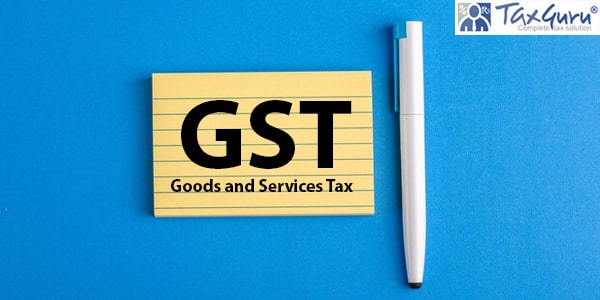Under GST provision any dealer can take input of ITC if same has been shown in their 2A. If taken input not shown in their 2A than they have to reverse the ITC and pay tax with interest.
Any dealer can take ITC of previous year prior to filling the Annual Return. Normally the Date declared by Government is Sept of next financial Year.
so prior to filling the annual return, It is important to know that there ITC is shown in 2A is equal to their Books. Means no difference between books and 2A.
So It is compulsory for every dealer to reconcile there ITC with 2A on end of every Quarter of F.Y.
Now there are some questions raised in our mind.
How can we reconcile our Books vs 2A?
How can we get rectify the error of ITC?
here we try to solve these type of question which normally raised at the time of GST Reconciliation.
Step 1 – First make a details in excel from your books of Accounts, with below details like . GST No. , Bill No , Date , Party Name , Taxable Value, IGST, CGST, SGST, Month , Remarks
Step 2 – Match the Total of this excel details with your books of accounts that IGST , CGST and SGST total matched with respective Tax Ledger.
Step 3 – Login to your GST site . Go to Respective month Return and Download 2A.
Step 4 – Remove the Total line and not submitted details from 2A by formatting the sheet.
Step 5 – Match the 2A total with GST Portal Summary sheet that respective month total is equal to summary sheet.
Step 6 – Take all details in single sheet. Like As per Books and As per 2 A . Remember Both Format should be same. Like GST No, Bill No, Date, Vendor Name , Taxable Value, IGST, CGST, SGST, Remarks (As per Books, or As per 2A)
Step 7 – Select the Sheet and take Pivot.
Step 8 – Get GST No, Bill No in Row, As per Books and As per 2A in Column Format.
Step 9 – Go each GST No. , make equal their Bill No , Draw differences in Las column of Taxes.
Step 10 – When You complete this task each GSTN wise difference sheet will be shown in your Pivot . You can call to respective vendor and get rectified your ITC if not paid by him.
Step 11 – This Pivot Sheet is your Primary Sheet for whole F.Y. , only you have to add new raw and select Pivot area, rest details automatically shown in Pivot Sheet.






















Hii Sir,
I had one doubt, in our 2A ITC is more than in Books,
So which amount we have to claim in Annual Return.
why is it importatnt to reconcile our books with our supplier books? what’S IT angle involved?
why is it importatnt to reconcile our books with our supplier books? what’s the GST & IT angle involved?
SCENARIO:
The Company has availed input tax credit through GSTR-3B for the period 2017-18, without reconciling with GSTR-2A. The credit has been availed based upon the physical copies of the invoices.
The law is ambiguous with respect to above issues and hence it can be argued either ways as evident from the below arguments:-
Argument in favour of the position that credit cannot be claimed-
As per Section 16 2 (c) of CGST Act 2017, one of the condition to avail the input tax credit is, payment of tax should be made by vendor to Government.
“The tax charged in respect of such supply has been actually paid to the government, either in cash or through utilization of input tax credit admissible in respect of the said supply”
Therefore, on a reading of above provisions it can be concluded that payment of taxes by the vendor is a mandatory requirement before availment of credit by the vendor. Assuming that vendor has not paid tax (which cannot be conclusively confirmed though), it can be contended that the Company may not be in a position to claim credit.
Arguments in favour of the position that credit can be claimed-
GROUND 1- Practical difficulty to verify the credit availed by the recipient against the payment of tax made by the vendor.
One of the condition to avail the credit is that, the tax shall be paid by the vendor to the Government. Payment of tax is on the basis of GSTR-3B and not on the basis of GSTR-1. GST authority does not have a bifurcation of invoice wise details, against which vendor has made the payment through GSTR-3B. In the absence of such bifurcation, GST authority has to rely on the GSTR-2A, to compare the credit availment with the credit availed in GSTR-3B. Since the invoice is appearing in GSTR-2A of the Company, it can be argued that it can avail the credit. The only caution point is that this ground gets diluted if the vendor hasn’t filed 3B for that relevant tax period at all.
GROUND 2- Possession of Original Tax Invoice.
As per Section 16(2)(a), recipient should be in a possession of original Tax invoice or debit note issued by the registered supplier under this act. Hence, Claiming of ITC with the aforesaid condition cannot be denied.
GROUND 3- GST portal currently not in a position to do tax payment level matching
This issue would have been automatically addressed if GSTR-2 and GSTR-3 was functional. Since the GSTR-2 and GSTR-3 was not functional, the matching provision was not applicable and in the absence of such matching provision, one cannot identify, whether the payment of tax has been made by the vendor in respect of any particular invoice. Thus, for the time being, the only viable option is to rely upon uploaded data (whether submitted/ paid or not).
GROUND 4- Provisional availment of input tax credit.
As per Section 16 (2)(c) of CGST Act 2017, credit can be availed subject to payment of tax by vendor, the extract of same has been reproduced below:
“Subject to Section 41 and 43A of CSGT Act 2017, the tax charged in respect of such supply has been actually paid to the government, either in cash or through utilization of input tax credit admissible in respect of the said supply.”
However, Section 16(2)(c) is subject to Section 41. Section 41 of CGST Act, 2017 provides for provisional availment of credit, where it states as under:
“Every registered person shall, subject to such conditions and restrictions as may be prescribed, be entitled to take the credit of eligible input tax, as self-assessed, in his return and such amount shall be credited on a provisional basis to his electronic credit ledger.
The law simultaneously allows for taking provisional credit under Section 41. And there is no timeline that has been prescribed as to till what point of time this credit can be carried forward in the books/ returns. The only timeline is the one mentioned in respect of Section 37(1), which talks about uploading of the invoices.
Thus, to conclude even if the vendor has not paid GST, the Company should be allowed to avail credit (even provisionally though) provided, the vendor has uploaded the invoice details which gets duly reflected in GSTR-2A report within the prescribed time limit.
CONCLUSION:
It can be argued that even though the substantive requirement of payment of tax by the supplier under Sec.16(2)(c) of CGST Act has not been satisfied (which does weaken the position of availing credit), the entire IT backbone/infrastructure as envisaged in Sec.37, 38, 42, 43 has failed to take-off, which made it impossible for the taxpayer to fulfil the procedure of taking credit. Thus, the credit should not be denied.
“Under GST provision any dealer can take input of ITC if same has been shown in their 2A. If taken input not shown in their 2A than they have to reverse the ITC and pay tax with interest.” – as your first paraghraph. Please provide the related ACT & Rules.
Regards
SKDAS